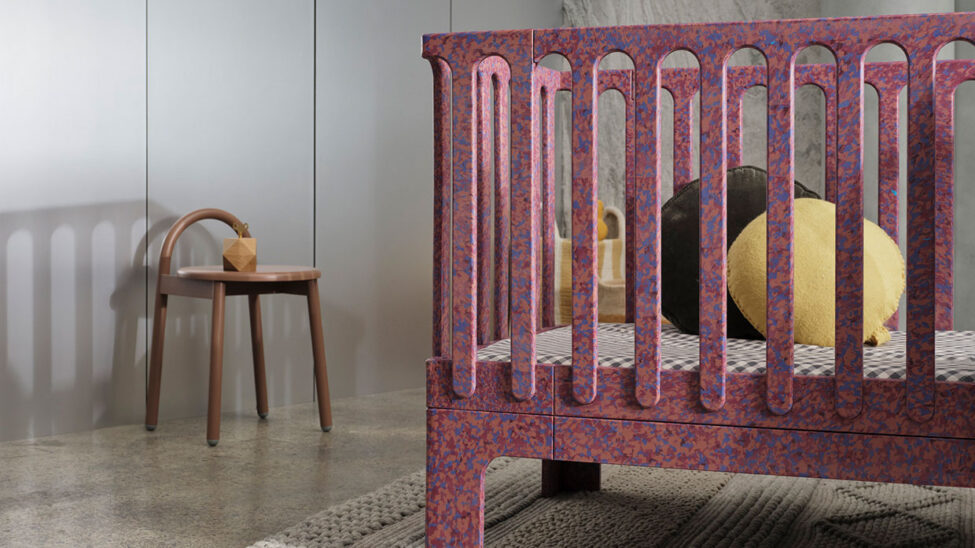
What Makes Recycled Cribs a Real Option Today
I’ll admit — the idea of putting my baby in a crib made from “used” materials didn’t sit well with me at first. As a mom and sleep consultant, I’m naturally obsessed with safety and comfort. But after digging into the topic (and testing a few options), I realized something: not all recycled materials are created equal, and some are surprisingly ideal for cribs.
Today, more brands are thinking about how they can reduce their footprint without compromising on quality. That includes using reclaimed wood, leftover factory materials, and safe, upcycled plastics to build furniture — including baby cribs.
The key word here is safe. The fact that something is “recycled” doesn’t automatically make it safe for your baby. But when the right processes are used, recycled materials can be sturdy, non-toxic, and just as reliable as anything brand new.
In our home, we ended up choosing a crib made from FSC-certified reclaimed pine. Not only did it pass every safety test, but it’s also held up through two kids and still looks beautiful.
Materials That Deserve a Second Life (and Ones That Don’t)
Let’s be honest: recycled doesn’t mean “mystery wood from a pile behind someone’s garage.” Good brands clearly document where the materials come from and how they’re treated.
These materials are generally safe and worth considering:
- Reclaimed solid wood that’s untreated or sealed with baby-safe finishes
- Recycled metals like aluminum or steel, especially when powder-coated
- Upcycled plastics that meet toy safety standards
But I’d stay away from anything vague, like “composite materials” or MDF unless it’s explicitly marked as low-emission and formaldehyde-free. Paints and varnishes are another thing to watch — if the label says nothing about VOCs (volatile organic compounds), I move on.
Watch for certifications like Greenguard Gold, FSC, and OEKO-TEX. They’re not just badges — they mean something when it comes to baby safety.
When “Eco-Friendly” Is Just a Label
I’ve learned to be cautious when a product screams “eco” but tells you nothing else. Greenwashing is real — especially in baby gear. A crib that claims to be sustainable should explain how: What’s the material? Where did it come from? How was it treated?
I had one client who ordered a crib labeled “natural finish” only to receive a product with a chemical smell that lingered for days. Turns out, “natural” wasn’t regulated on that site, and there was no transparency about what was actually used.
Transparency should be non-negotiable. You have the right to ask — and get answers — about what your baby’s bed is made from. If you don’t, move on. There are brands that share lab reports, material sourcing, and even production photos.
If a crib is really eco-friendly, the company will usually brag about it in detail. And that’s a good thing.
Behind the Scenes of Recycled Crib Production
One thing that helped me feel more confident in recycled options was seeing how they’re made. Some brands offer factory tours or behind-the-scenes videos. You can watch how old warehouse floorboards are turned into sleek, safe crib rails. It’s fascinating — and reassuring.
It’s also worth noting that making a crib from recycled materials often uses less energy than creating one from raw materials. That means fewer emissions, less waste, and a smaller footprint — something that felt good to support, especially as a parent thinking long-term.
One mom I worked with even sourced a handmade recycled crib from a local carpenter who uses salvaged oak. The finish was beeswax-based, and the craftsmanship was incredible. It’s become a keepsake in their family, not just furniture.
There’s something special about giving new life to old materials — especially when the result is a safe place where your child sleeps.
How Our Family Chose the Right One
I’ll wrap up with our story. We didn’t set out to buy a recycled crib. In fact, we stumbled on one by accident — it was a display model, made from reclaimed pine, and it had this soft matte finish I couldn’t stop touching.
What sold us? The label said “no VOCs,” it was GREENGUARD certified, and it felt solid — not wobbly or questionable. Our daughter has slept in that crib, then her brother, and now it’s in the attic waiting for baby number three.
It’s not about being perfect or 100% zero waste. It’s about choosing better where you can — and for us, this crib was that choice. It’s safe, it’s durable, and it tells a story. That matters.


